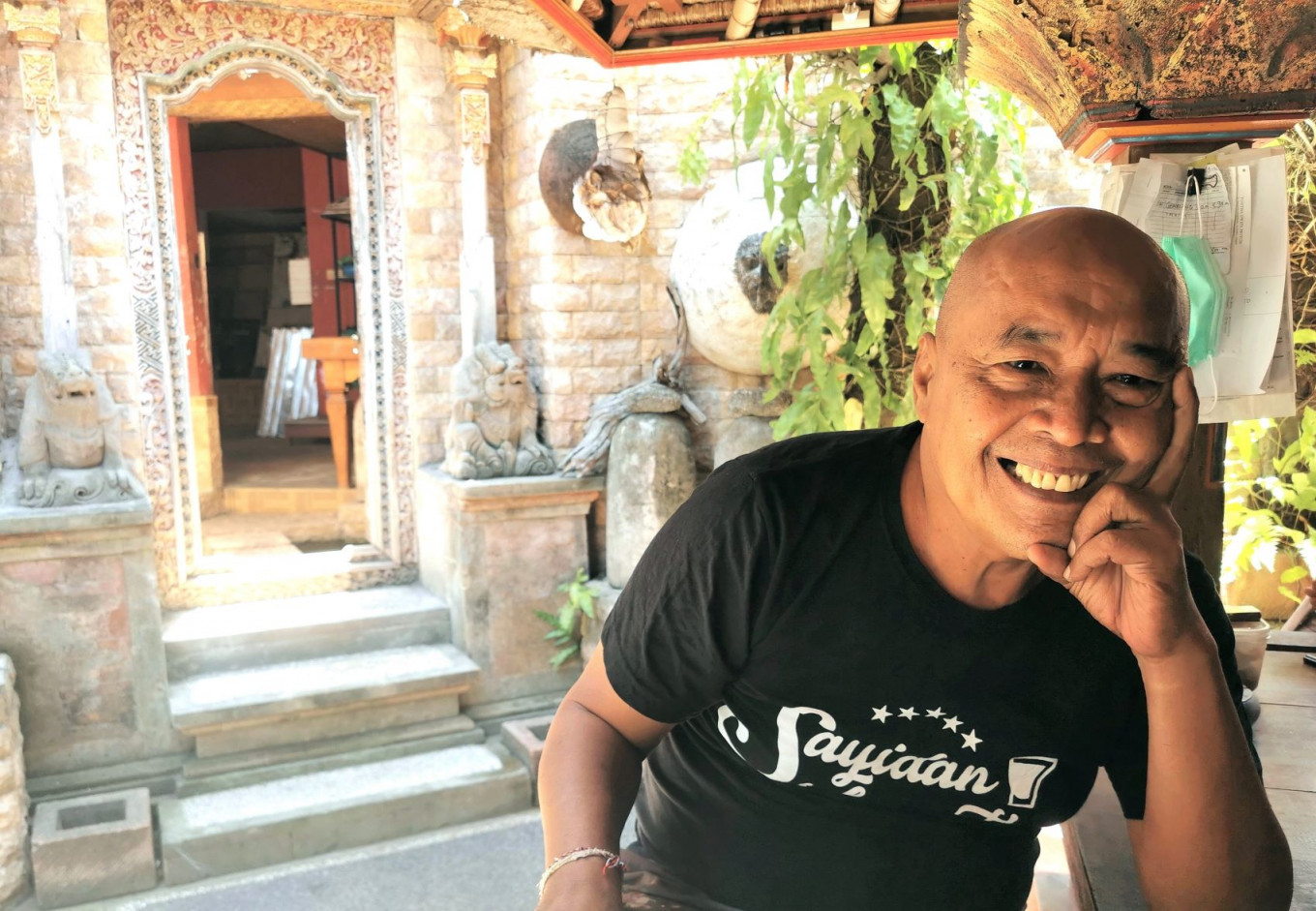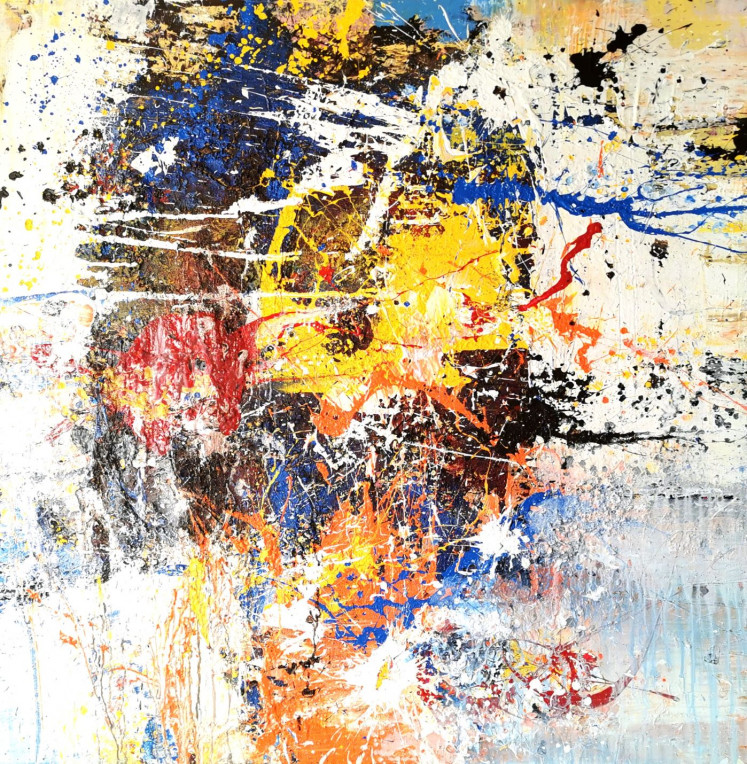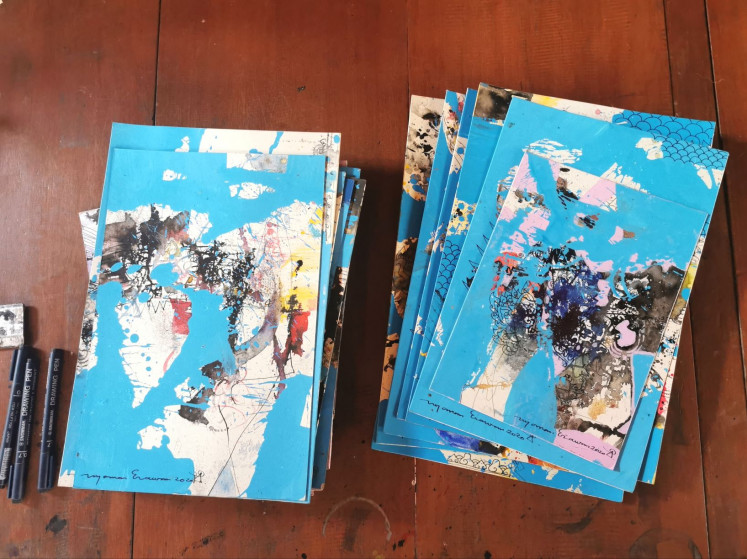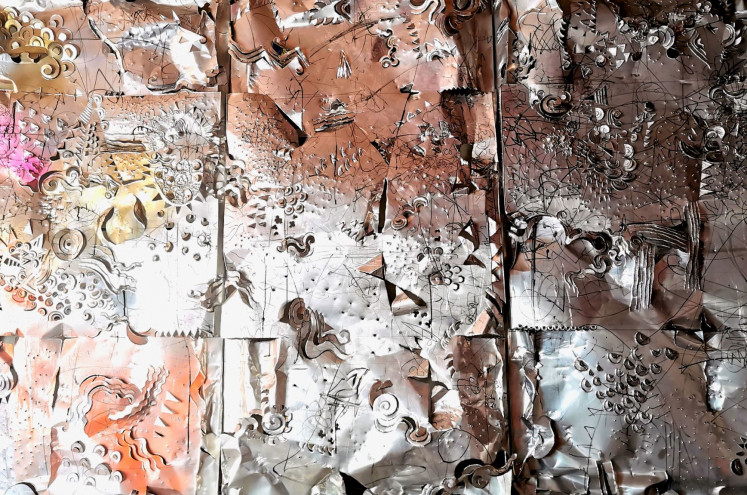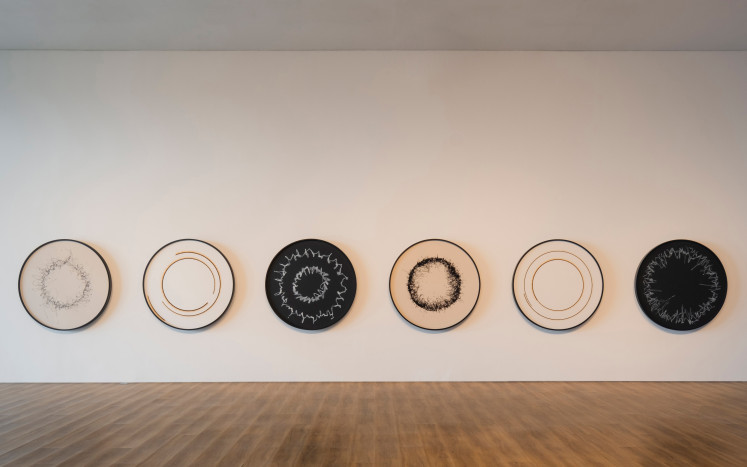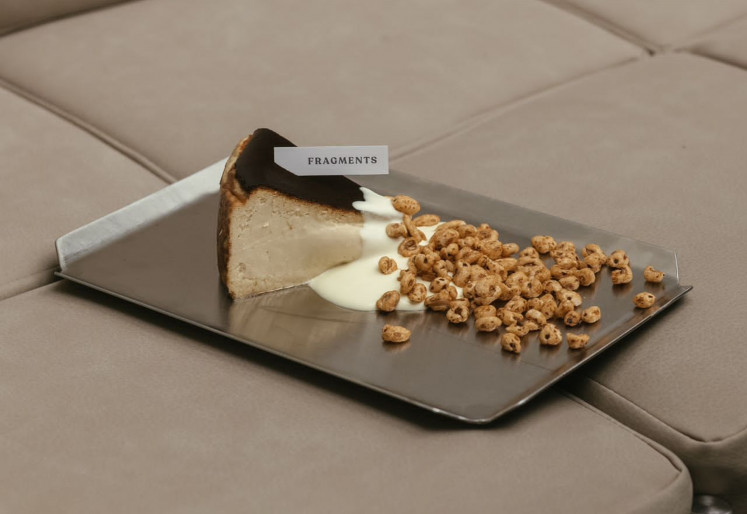Popular Reads
Top Results
Can't find what you're looking for?
View all search resultsPopular Reads
Top Results
Can't find what you're looking for?
View all search resultsNyoman Erawan: Painting in the time of pandemic
The pandemic is no match for Balinese artist Nyoman Erawan's restless mind and his incessant urge to explore new possibilities.
Change text size
Gift Premium Articles
to Anyone
W
ithout the silvery goatee that for decades has been his signature look, Nyoman Erawan's face looked, well, much more innocent. The skeptical and often impatient facial expressions were gone, replaced by a sort of harmless demeanor.
Obviously, he was aware of that change and regretted it. "I shaved it a couple days ago and now I feel like I’ve lost my rough edges a little bit," he chuckled.
Losing the goatee might have tamed his outer appearance but did nothing to diminish his spirit. The 62-year-old visual artist is still as restless as he was three decades ago when he made the leap of faith into the realm of art.
It was that restless mind that spurred him to dig deeper into the island's myths and symbols, questioning the purposes and rationales behind every rite and offering, and, thus, finding the substance that lay within the heart of every form.
"I found what is written and what is implied in Balinese culture. And what is implied – one of the most important elements – is none other than the acknowledgement of the transitory nature of all phenomenon. Everything shall perish and Balinese reiterate and reenact this philosophy in every ritual in which they partake and in every art form they create," he said.
One simple example, he suggested, was the Bade cremation tower. Constructing the tiered structure of wood and bamboo is a costly, time-consuming and labor intensive endeavor. In its final form, Bade is an imposing structure, lavishly-decorated with colorful masks and gold-colored decorative patterns.
"Do the Balinese keep this wonderful creation of art on display for the general public to adore? No, they burn it completely to the ground. They create art and then destroy it. Nothing is eternal, everything is ephemeral," he said.
Destruction and deconstruction became Erawan's primary mantra, the logic behind his creations that span from paintings and installations to theatrical performance.
He takes popular symbols and well-known myths and turns them upside down, emptying them out of their long-held interpretations and molding them into new vessels for his concerns.
"I am a Balinese and it is impossible for me to create something without being influenced by my cultural roots. But I have made a deliberate choice to use elements taken from those roots to voice our current problems and struggles. So, I take the symbols and ‘destroy’ them in order to ‘deconstruct’ their meanings."
Upcycle: Two stacks of new works by Nyoman Erawan on matte paper salvaged from a professional framer's shop. (JP/I Wayan Juniarta)That restless mind has brought him both commercial success and artistic recognition, making him one of the island's most influential contemporary artists.
As the COVID-19 pandemic casts a dark cloud over the island, that restless mind has also kept Erawan from falling into a paralyzing state of despair.
He admitted that as a painter, he has certain psychological advantages over other people in dealing with isolation and financial problems triggered by the pandemic.
"As a painter, I am used to spending days and even weeks in my studio working on my paintings, so the social distancing and working from home requirements have not affected my mental health. Being an artist, I am also accustomed to financial uncertainty. There have been times when I have had a lot of cash and there have been times when I have been flat broke,” he said with a wide grin on his hair-less face.
The pandemic has not even slowed him down. In fact, it has provided him with extra time to experiment with a new medium and tools.
In the past, Erawan has employed resin and aluminum to provide structural strength to his works on paper and canvas. Today, he is using aluminum panels as his primary medium.
Using a variety of tools, from chisels and hammers to screwdrivers and a crowbar, he creates intricate patterns and shapes as well as dents and cavities on the aluminum panels.
Experiment: Nyoman Erawan's most recent work is a triptych of aluminum panels carved with various tools, including a crowbar. (JP/I Wayan Juniarta)In his five previous aluminum works, Erawan painted the carved surface with acrylic colors. For his most recent work – an aluminum triptych – he decided to leave it as it is.
"I aimed for the simplest appearance, without any paint, to let the natural light create shadows and glints as it travels across the jagged surface," he said.
Erawan’s experimentation with aluminum has brought him much joy. The repeated acts of striking and piercing the panel, he confessed, helped him vent his built-up emotions. The variety of sounds created by the different metal tools is also a lively kind of primal music to his ears.
"It is so uplifting and challenging. I am an easily bored person, so new explorations have always energized me," he said.
A new exploration does not mean Erawan has abandoned his old mediums. In the last few months he has also created scores of works on canvas and paper. He possesses an incessant urge to continue creating and exploring. An urge fueled by his restless mind and conviction that he has yet to create his masterpiece.
"Honestly, I cannot decide whether my paintings are good or bad. I look at them and keep telling myself: ‘This is not it; that is not it’. This has propelled me to keep working, trying to create the one piece that will finally make me proclaim: ‘This is it’.” (ste)

